Clusters of galaxies are the largest structures of our observable Universe. They consist of hundreds of galaxies bound together by their own gravitational pull. Between galaxies there is much matter, much more matter that in the galaxies themselves, this matter is gas more or less hot, and micro particles of dust or soot. The hot gas whose temperature can reach 100 million degrees, forming a plasma, i.e. a soup of matter where atoms are not together but broken. In this soup low density 1000 particles per cubic meter, there are charged particles, in other words separated ions and electrons. This plasma is a strong X-ray emitter. This is what is seen on the right image, showing the Coma cluster of galaxies.
This seemingly ordinary image is very interesting if you look closely carefully because it shows thousands of galaxies, not in an empty universe of matter, but in the middle of huge bubble of hot gas.
This gas is visible through the Chandra space telescope that allows us to see in the field of x-rays. The Coma cluster is a cluster of galaxies, spherical, dense in the center, which contains more than 1000 galaxies identified and which lies 300 million light-years with the Virgo Cluster in the constellation Virgo. These huge arms of hot gas that can be seen in the Coma cluster of galaxies cover at least half a million light years. This field of view gives us a glimpse of how the Coma cluster has grown and continues to grow through mergers of smaller galaxy clusters groups. It is currently one of the largest structures in the Universe held together by gravity. The optical data of the composite image shows hundreds of galaxies belonging to the Coma cluster. These galaxies represent little matter compared with the overall cosmic structure , they contain only about one-sixth of the mass of hot gas. More, on this processed using data from Chandra image, we see only the brightest X-ray emission, in reality the hot gas completely fills the field of view . | | Researchers believe that these gigantic arms probably formed with the lost gas by clusters of galaxies in their movement. The gas was ripped by "wind" created by the movement of the cluster galaxies. In fact you can see the enlarged image, galaxies trailing behind, a cloud of hot gas (pink).
Coma is an unusual cluster of galaxies, because it does not contain one, but two giant elliptical galaxies near the center. These two giant elliptical galaxies are probably the result of fusion in the past small groups of galaxies. Most theoretical models predict that mergers between groups such as Coma produce strong turbulence, as on the surface of the sea, brewed by the passage of many ships. But the observation of the Coma cluster shows that its long arms of hot gas to the smooth shape are located in a environment rather quiet, even after many mergers.
Although the amount of turbulence in clusters of galaxies is difficult to estimate, astrophysicists believe that it is the large-scale magnetic fields that are probably responsible for the lack of turbulence found in Coma. These data on the Coma cluster were obtained after six days of observation time.
An article on Chandra observations was published in the journal Science on September 20, 2013. The lead author of the article is Jeremy Sanders, Institute for Extraterrestrial Physics Max Planck Institute in Garching, Germany. NB: galaxy comes from the Greek "galactos" which means "milk", hence the name of our galaxy: the Milky Way. | | 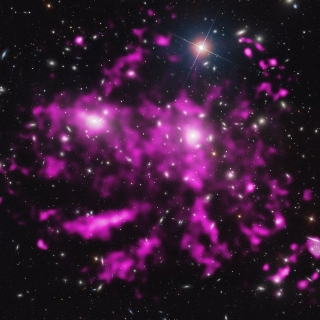 Image: Coma cluster of galaxies. This seemingly ordinary image is very interesting if you look closely carefully because it shows thousands of galaxies, not in an empty universe of matter, but in the middle of huge bubble of hot gas, visible through the space telescope Chandra x-ray. This gas fills the space between the galaxies is much more important than the mass galaxies themselves. Credit: X -ray: NASA / CXC / MPE / J . Sanders et al ; optic: SDSS. |
 Automatic translation
Automatic translation



 The hidden galaxy, one of Euclid's first images
The hidden galaxy, one of Euclid's first images
 The Virgo Cluster spans approximately three Full Moons
The Virgo Cluster spans approximately three Full Moons
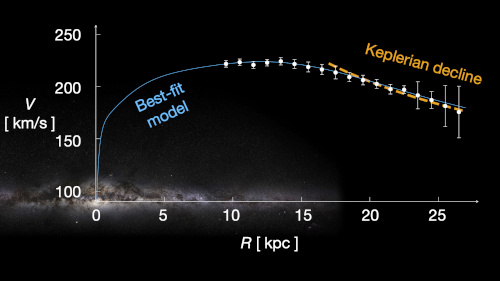 Where did the dark matter in our Galaxy go?
Where did the dark matter in our Galaxy go?
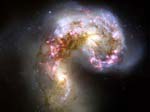 Merging galaxies and black holes
Merging galaxies and black holes
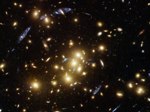 Mirages created by gravitational lenses
Mirages created by gravitational lenses
 Mystery of the Big Bang, the problem of the horizon
Mystery of the Big Bang, the problem of the horizon
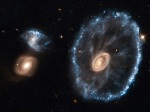 Cartwheel Galaxy Cosmic Event
Cartwheel Galaxy Cosmic Event
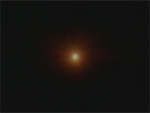 The first second of our history
The first second of our history
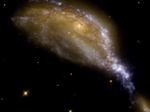 A small galaxy tears apart the large NGC 6745
A small galaxy tears apart the large NGC 6745
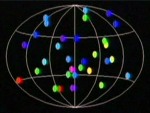 The mystery of gamma bursts
The mystery of gamma bursts
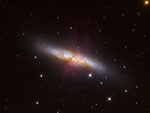 The Cigar Explosion
The Cigar Explosion
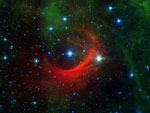 Shockwaves
Shockwaves
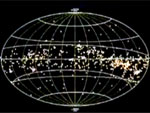 Gould's belt, a stellar fireworks display
Gould's belt, a stellar fireworks display
 Recombination in cosmology
Recombination in cosmology
 Journey to the center of our galaxy
Journey to the center of our galaxy
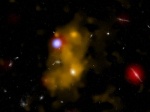 Lyman-alpha bubbles
Lyman-alpha bubbles
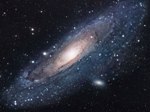 Andromeda in the ultraviolet
Andromeda in the ultraviolet
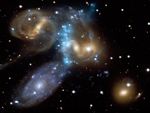 The most beautiful galaxy clusters
The most beautiful galaxy clusters
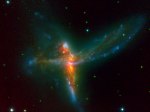 Tinkerbell merger of three galaxies
Tinkerbell merger of three galaxies
 A gigantic black hole
A gigantic black hole
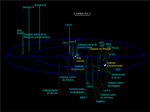 Enigma of coplanar galaxies
Enigma of coplanar galaxies
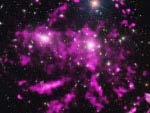 The cluster of galaxies Coma in its soup
The cluster of galaxies Coma in its soup
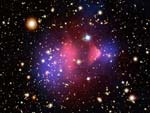 The cannonball, proof of dark matter
The cannonball, proof of dark matter
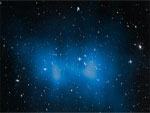 El Gordo galaxy cluster
El Gordo galaxy cluster
 Einstein ring and cross
Einstein ring and cross
 How to measure distances in the Universe?
How to measure distances in the Universe?
 The Hubble sequence and types of galaxies
The Hubble sequence and types of galaxies
 The spiral shape of the galactic arms
The spiral shape of the galactic arms
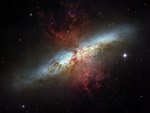 Even more stars, the Cigar galaxy
Even more stars, the Cigar galaxy
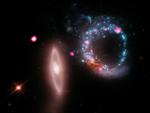 The Universe of X-rays
The Universe of X-rays
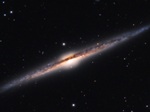 The most beautiful galaxies
The most beautiful galaxies
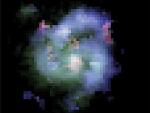 The oldest galaxies in the universe
The oldest galaxies in the universe
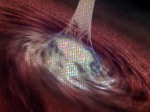 Quasars the nuclei of galaxies
Quasars the nuclei of galaxies
 Sagittarius A black hole at the center of our Galaxy
Sagittarius A black hole at the center of our Galaxy
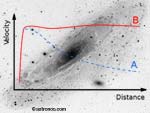 The MOND theory and its contradiction
The MOND theory and its contradiction
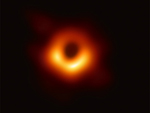 The first image of a black hole
The first image of a black hole
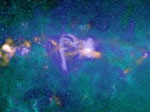 Central area of the Milky Way
Central area of the Milky Way
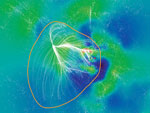 Laniakea, our supercluster of galaxies
Laniakea, our supercluster of galaxies